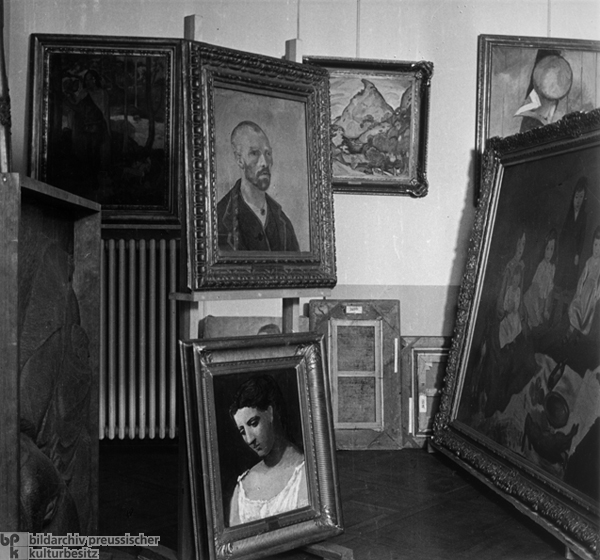













INTRODUCTION | DOCUMENTS | IMAGES | MAPS | EDITOR
|
All art that did not correspond to the National Socialist aesthetic was considered "degenerate." This expansive category included modern and avant-garde works by the Expressionists, Impressionists, Surrealists, and the Fauves, works by artists of Jewish descent, and socially critical works, such as those by Käthe Kollwitz. By the summer of 1937, the large-scale confiscation of “degenerate” art from German public collections was already underway. Confiscated works were held in depots, such as the one pictured below, and then sold abroad, providing the regime with a source of foreign currency. On June 30, 1939, more than 125 confiscated works, including the famous van Gogh self-portrait seen below, were put up for auction at the Hotel National in Lucerne, Switzerland. Van Gogh’s Self-Portrait Dedicated to Paul Gauguin (1888) had been confiscated from the Neue Staatsgalerie in Munich; it fetched 175,000 Swiss francs at auction, 30,000 more than the asking price. To the left of the self-portrait is a painting from Gauguin’s Tahitian period; under it is Picasso’s Head of a Woman (1922).
© Bildarchiv Preußischer Kulturbesitz |
 print version
print version return to image list
return to image list previous image
previous image
